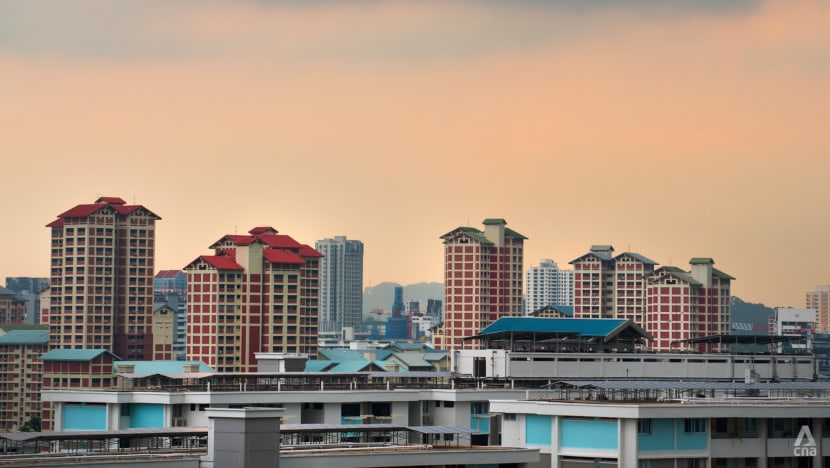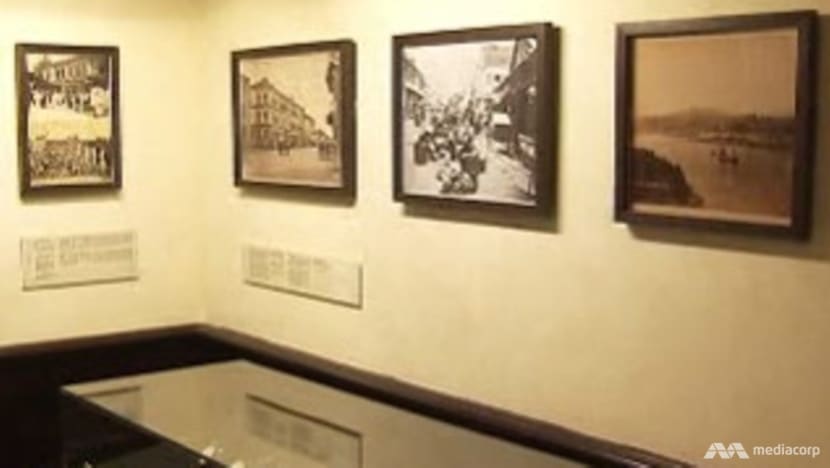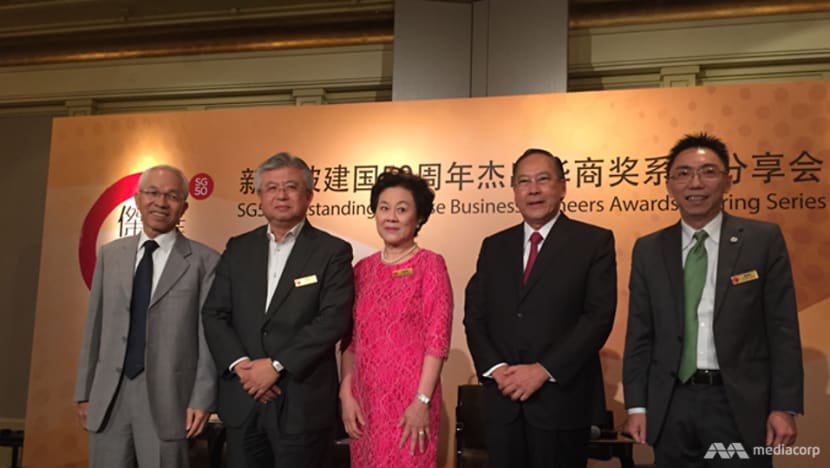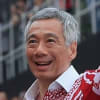commentary Commentary
Commentary: From Singapore to Singaporeans, the making of a national identity
The shared experiences of a historic arc that spanned a bicentennial are what make being Singaporean unique, says Prime Minister Lee Hsien Loong.

General view of HDB residential blocks against the Singapore skyline. (File photo: Jeremy Long)
This is the first of three commentaries by Prime Minister Lee Hsien Loong based on the Chinese speech he delivered at National Day Rally on Aug 19, 2019
Read the second on US-China relations and the third on the outlook for the Singapore economy.
SINGAPORE: We are commemorating Singapore’s bicentennial – 1819 was a turning point in our history.
That year, Raffles landed in Singapore and established a free port here. This attracted migrants from Southeast Asia, India and China, who came to seek their fortunes.
Many Chinese came from Guangdong, Chaoshan and Fujian. Some came from nearer places like Penang, Malacca and the Riau Islands.
Many started as labourers – “coolies” – barely able to make ends meet. They strove hard to eke out a living. Some started small businesses.
The more educated ones took up professions like teaching and journalism. Others developed plantations, set up banks, or went into trading. Ultimately, many settled down and built their lives here.
A FOUNDING GENERATION
They were our “founding generation” who contributed much to Singapore. The leaders among them set up clan and trade associations to help their fellow countrymen integrate and establish themselves. These “towkays” rallied the Chinese community to build hospitals, schools and temples.
Most of our forefathers maintained close links with their motherland. They arrived here in Nanyang as sojourners, intending to return to China one day.
They still saw themselves as people of China, and were passionate about their homeland. Many participated in the political movements and revolutions in China, and some gave their lives.
Over a hundred years ago, Sun Yat Sen set up the Tongmenghui (United League of China, the predecessor of the Kuomintang) to overthrow China’s Qing Dynasty.

Tongmenghui’s Southeast Asian headquarters was established in Singapore, at Wanqingyuan (today’s Sun Yat Sen Nanyang Memorial Hall), where the revolutionaries planned several uprisings in China.
In the 1930s, after Japan invaded China, the Singapore Chinese were once again roused to arms. An eminent community leader, Tan Kah Kee, led the efforts to raise funds and organise volunteers to support China.
These included the "nanqiao jigong" (Nanyang Transport Volunteers), who returned to China to fight the Japanese. This was one reason why the Japanese carried out the Sook Ching Operation here after they captured Singapore in World War II, massacring tens of thousands of Chinese people in Singapore.
After World War II, the Chinese Communist Party defeated the Kuomintang in the civil war, and founded the People’s Republic of China (PRC) in 1949. This made a deep impression on many passionate, idealistic young Chinese in Southeast Asia, inspiring them to join local anti-colonial struggles.
A CRITICAL LIFE DECISION
But the identity of the Chinese in Southeast Asia was ambiguous. The influence that the new PRC had over the hearts and minds of these young people engendered distrust of their motives, and of China, among Southeast Asian countries.
It was in this context that China in the 1950s started to distinguish between overseas Chinese who were "haiwai huaqiao" (海外华侨) and those who were "huaren" (华人). "Haiwai huaqiao" referred to overseas Chinese nationals who retained their Chinese nationality, while "huaren" referred to overseas ethnic Chinese who had taken up their host country’s citizenship.
None other than then-Premier Zhou Enlai stated clearly that once "huaren" took up citizenship in their country of residence, they could no longer be considered Chinese nationals, and should be loyal to their new home country.
READ: The growing importance of China studies with Singapore characteristics, a commentary
Our forebears had to make a critical life decision: To remain in Singapore, or to return to the motherland. In the end, the majority chose to remain in Singapore. And together with the other races, they went on to build a multicultural society and country here.
BECOMING SINGAPORE CITIZENS
In the 1960s, as Singapore progressed towards independence, Chinese community groups worked with the Government to support Singapore’s social and economic progress, and our national defence.
When we introduced National Service in 1967, the Singapore Chinese Chamber of Commerce and Industry (SCCCI) presented the first two batches of enlistees with medallions engraved with the words “National Service” and “尽忠报国” (dedication and loyalty to the country).
And in the following year, when the Government created the National Defence Fund with a target of raising S$10 million, the SCCCI raised more than S$1 million for the fund.

As these examples show, the Chinese population had by then transferred their loyalty to Singapore, and had started identifying themselves as Singapore citizens.
The Chinese Singaporean identity formed gradually over the last 200 years. We honour and commemorate our forefathers’ dedication to their motherland, as China was then. This was part of our journey to becoming Singaporeans.
Thus we made Wanqingyuan a national monument, and also erected a memorial there to the Nanyang Transport Volunteers.
Similarly, every year on Feb 15, Singaporeans of all races and faiths attend a solemn ceremony at the Civilian War Memorial to remember and honour those who perished in World War II.
The Japanese Occupation was a tragic experience for all in Singapore. But it was also a bonding experience, for it crystallised and aroused a national consciousness among the different races here, and made us determined to become masters of our own fate.
FROM SINGAPORE TO SINGAPOREANS
The Malay and Indian communities have similar stories to tell about the evolution of their own identities here. They, too, came to Singapore as sojourners.
During the anti-colonial struggle, many Indians here were inspired by India’s own struggle for independence, and the Malays by the nationalist movements in Indonesia and Malaya. Indeed, our own battle cry then – Merdeka! – was originally the slogan of the Indonesian and Malayan independence struggles.
Just like the Chinese, the local Malays, Indians and Eurasians progressively sank their roots here. We may have first been politically awakened by world-stirring events in different, distant lands. But we all came to see this island-nation as the country where our loyalty and our future lay.

This historical arc – in the words of the Bicentennial Experience, “From Singapore, To Singaporean” – is what makes us uniquely us. Even today, new immigrants have to go through this process, before gradually integrating themselves into Singapore society and becoming fully Singaporean.
READ: Bicentennial can be a worthwhile endeavour, a commentary
Now, as the world enters troubled times, Singapore faces new and daunting challenges.
Being aware of our history, of how we became Singaporean, will help us understand the development of our national consciousness. This in turn will lend us a perspective as we navigate the turbulent voyage ahead.
Lee Hsien Loong is Prime Minister of Singapore.














